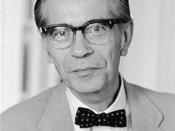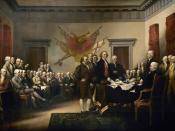WORKS of philosophy can last for millennia, novels for centuries. Works of history, if they're really good, survive maybe a generation. But Richard Hofstadter's The American Political Tradition: And the Men Who Made It is now celebrating its fiftieth year in print and remains a solid backlist seller. High school students, undergraduates, and graduate students read it, as do lay readers. Journalists grab it off the shelf when they need to pepper a column with a dash of historical authority. Academic historians revere it too: whenever they set out to write about it, they end up producing panegyrics. Like a robust octogenarian, the vigorous old book invites us to inquire of it the secrets of its longevity. Discuss this article in Post & Riposte.
Begun in 1943, when Hofstadter was just twenty-seven years old, and completed four years later, The American Political Tradition launched the young scholar on his career as the pre-eminent historian of his time.
He had already written one book, Social Darwinism in American Thought; it had been his graduate thesis, under Merle Curti, at Columbia University, and it remains one of the most important books on the subject. After graduating, Hofstadter taught briefly at the University of Maryland but soon returned to Columbia, where he taught for the balance of his career.
There he wrote not only The American Political Tradition but several other provocative and enduring works. Of these perhaps the most notable was his 1955 Pulitzer Prize-winning The Age of Reform, which introduced his idea of "status politics" -- the notion that people act less from pure economic self-interest than from a desire to preserve their social standing -- and controversially portrayed the late-nineteenth-century Populists as moved by fears of modernity, nostalgia for an agrarian past, and no small amount of bigotry. Revisionists have...


